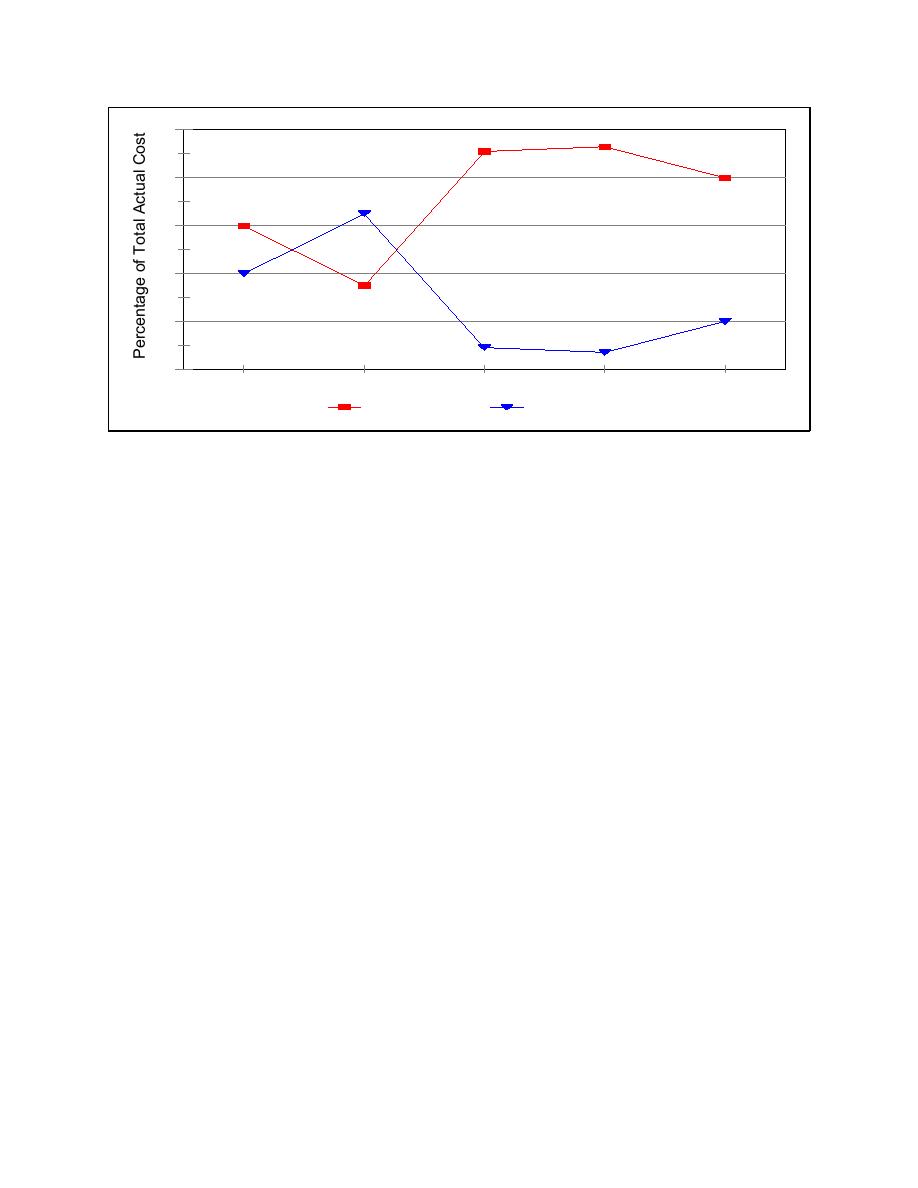
EM 1110-2-1100 (Part V)
31 Jul 2003
100
93
91
80
80
65
60
60
40
40
35
20
20
9
7
0
1950s
1960s
1970s
1980s
1990s
Beach Nourishment
Structures
Figure V-3-3. Shift from hard (armored walls, groins, etc.) to soft (beach nourishment) alternatives by the
Corps of Engineers (from Hillyer 1996)
The Corps has specified the EST methodology as a requirement for the risk-based analysis in all
shore protection studies (ER 1105-2-101; Thompson et al. 1996). The probabilistic design
(functional, structural) of coastal structures remains a constraint, but recent advances such as the EST
methodology are helping to produce designs that provide a realistic level of storm protection.
(2) Economics. A key constraint for each shore protection alternative is life-cycle cost. In general, the
level of storm protection and, hence, costs (high, medium, low) can only be justified when the corresponding
value of property and infrastructure to be protected (benefits) are comparable (high, medium, low). Costs
are not subjected to any other constraints. Benefits, however, can be restricted and limited to only those that
are perceived to benefit the funding authority. For example, see Part V-8 for the restriction on allowable
benefits for Federal government-sponsored projects designed by the Corps.
(a) Cost. It is important to have a clear definition of all terms when discussing costs. Moreover, nothing
lasts forever. Advocates for permanent, low cost, or retreat solutions for shore protection fail to understand
the following and how they are applied in the professional practice of coastal engineering design economics.
Costs:
The monetary value required for a project. Without additional qualifying
words, the word alone is confusing and subject to misinterpretation.
Initial costs:
The total expense for all initial construction and design costs of a
project. The year of construction should be noted so that inflationary
cost aspects can be estimated in the future. Distinction should be made
between estimates and actual contract costs.
Maintenance costs:
The estimated annual expenses required to maintain both the functional
and structural integrity of the alternatives which are altered by storm
damage and natural processes. Both deterministic estimates and risk-
based calculation methods can be employed. (see Part VI-7 for an
example of the probabilistic method for rubble-mound breakwaters)
Shore Protection Projects
V-3-9


 Previous Page
Previous Page
